By Adam Sawyer
I grew up in Southern California, so it felt strange to stand on a beach that wasn’t a patchwork of colorful blankets, buckets and an excess of humanity. But on this day and this stretch of shell-covered gulf shore there were no people at all, aside from my party. What we did see were birds—thousands of them. I thought, “Why doesn’t it stink? With so many birds, it should probably stink here.” But it didn’t. On the contrary, the air was a rare seasonal springtime blend of sweet-smelling humidity interrupted by the occasional clean cool breeze. Luckily for us birding, the birds had just arrived—but their stay would be brief.
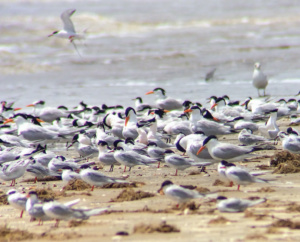
Several species of terns at Sea Rim State Park, Courtesy of Sea Rim State Park
It was mid-April at Sea Rim State Park in Southeast Texas, and I was a greenhorn birder on a guided outing with a handful of seasoned participants from around the country. The Beaumont/Port Arthur area and its immediate environs are smack dab in the middle of two massive spring migratory paths for birds. Many birds flying up from South and Central America make their first landfall here after a rather lengthy flight. For a few weeks every year, Southeast Texas is perhaps the birding capital of North America. To witness the scale and volume of this annual avian influx was almost overwhelming—akin to a scene straight out of a National Geographic documentary.
Being in Beaumont
Beaumont, Texas is located near the gulf coast 60 miles west of Lake Charles, Louisiana, and 85 miles east of Houston, where you’ll also find the nearest major airport. The town is home to roughly 118,000 residents and a myriad of lodging options to accommodate any budget or stylistic preference. Beaumont is also home to a thriving and eclectic culinary scene featuring Tex-Mex, BBQ, Cajun and Vietnamese influences among many others.
In the days leading up to that magical moment, I had become thoroughly and willingly indoctrinated into birding culture. Just like any other passion or pursuit, birding has its own set of standards and rules, both written and unwritten. The people I was with were real birders and generously shared the nuances of this new world with me.
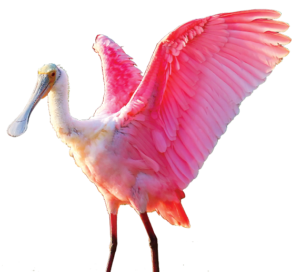
More than 350 species of birds are regularly spotted in the Beaumont area annually. Some that are often observed during the spring migration include: spoonbills (above), herons, plovers, avocets, grebes, nuthatches, warblers, flycatchers, vireos, sapsuckers, thrushes, kites, sparrows, woodpeckers, ibis, orioles, tanagers, cuckoos, wrens and towhees.
It didn’t take long to know that I didn’t want to be a soulless “lister”—chasing numbers with no real respect or love of the game. I was interested, however, in acquiring “lifers”—encountering birds that I had never seen or heard before. I discovered that some official bird names are objectively humorous. Nuthatches, tits, tufted these and those, and bustards, were just a few. Learning the names of the birds we encountered came along with a laugh or two from time to time, all in fun, of course. These interesting words helped me to make a real effort to commit the names to memory.
That final afternoon on the beach was followed by happy hour at Neches Brewing Company. These became the inspirational crescendo of the birding segment of my Beaumont trip.
Big Thicket National Preserve
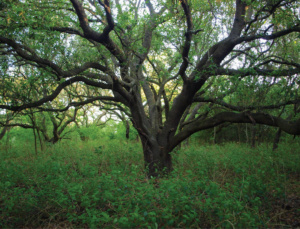
Next up, I wanted to try something a little more active—paddling. The Big Thicket National Preserve is often heralded as the “Biological Crossroads of North America,” for the fact that it has one of the most biologically diverse assemblages of flora and fauna in the world. It was the labyrinthine sloughs lorded over by thickly mossed cypress and tupelo trees found within the Beaumont Unit of the preserve that would be my primary focus of birding exploration. The roughly five-mile-long Cooks Lake to Scatterman Loop is an official Texas Paddling Trail. I was told it could be the poster child for scenic waterways in the state, and that seemed like the perfect way to experience this lush place.
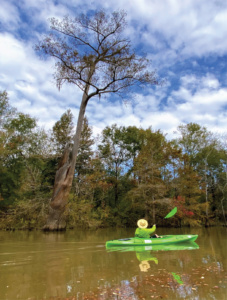 It was a gentle, room temperature afternoon when a small cadre of new friends and I put kayaks in the water. We paddled across the Neches River, making our way towards the Pine Island Bayou. Initially, the waterway was calm, broad and expansive. The banks were guarded by healthy stands of oak, loblolly pines and heron that would flee in prehistoric, pterodactyl-like fashion on our approach. The paddling, as well as the company, was easy-going and exceedingly pleasant. As we approached the Cooks Lake Bayou, the scenery and tenor of the outing changed considerably.
It was a gentle, room temperature afternoon when a small cadre of new friends and I put kayaks in the water. We paddled across the Neches River, making our way towards the Pine Island Bayou. Initially, the waterway was calm, broad and expansive. The banks were guarded by healthy stands of oak, loblolly pines and heron that would flee in prehistoric, pterodactyl-like fashion on our approach. The paddling, as well as the company, was easy-going and exceedingly pleasant. As we approached the Cooks Lake Bayou, the scenery and tenor of the outing changed considerably.
We entered into a swamp of tupelo and bald cypress trees. I was asked to take the lead and did so, reluctantly. I’m a somewhat experienced paddler but up to that point had spent zero hours on alligator-laden bayou water trails.
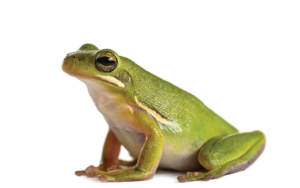
Within the 113,000 acres of the Big Thicket, there are approximately 1,320 species of trees, shrubs, vines and grasses, sixty mammal species, and eighty-six reptile and amphibian species, including green tree frogs.
Yes, indeed, the Big Thicket is home to a ton of critters including coyotes, armadillos, bobcats and alligators. I’m pleased to report we managed to avoid them. The swamp was dense, and the trail became increasingly narrow, with the roots or “knees” of the cypress trees reaching eerily up towards us from dark waters. The route required some tight turns and wayfinding ability, with the next trail marker appearing out of nowhere just as we were beginning to wonder when we might see one again.
Scatterman Lake
It was all at once thrilling and marvelously haunting. We took our time, savoring the moment before the tapered trail eventually opened up into the expanse of Scatterman Lake.

Pine Island Bayou, photo Julie Sanders, SETX Properties
The diversity of those two experiences was enough for Beaumont to win me over without a fight, and bring me back for more. My next trip will be to check out some fall or winter hiking options. I might take a pass on summer, though. There’s something about the words “August” and “Texas” that doesn’t quite jibe with me.
Adam Sawyer is an outdoor and travel writer, author, photographer and speaker based in the Pacific Northwest.
Plan a Birding Trip
Download the AAA Mobile app for maps, discounts, restaurants, and lodging at AAA.com/mobile. For help planning your next adventure, find a local AAA Travel Agent or call AAA Travel at 800-529-3222.


